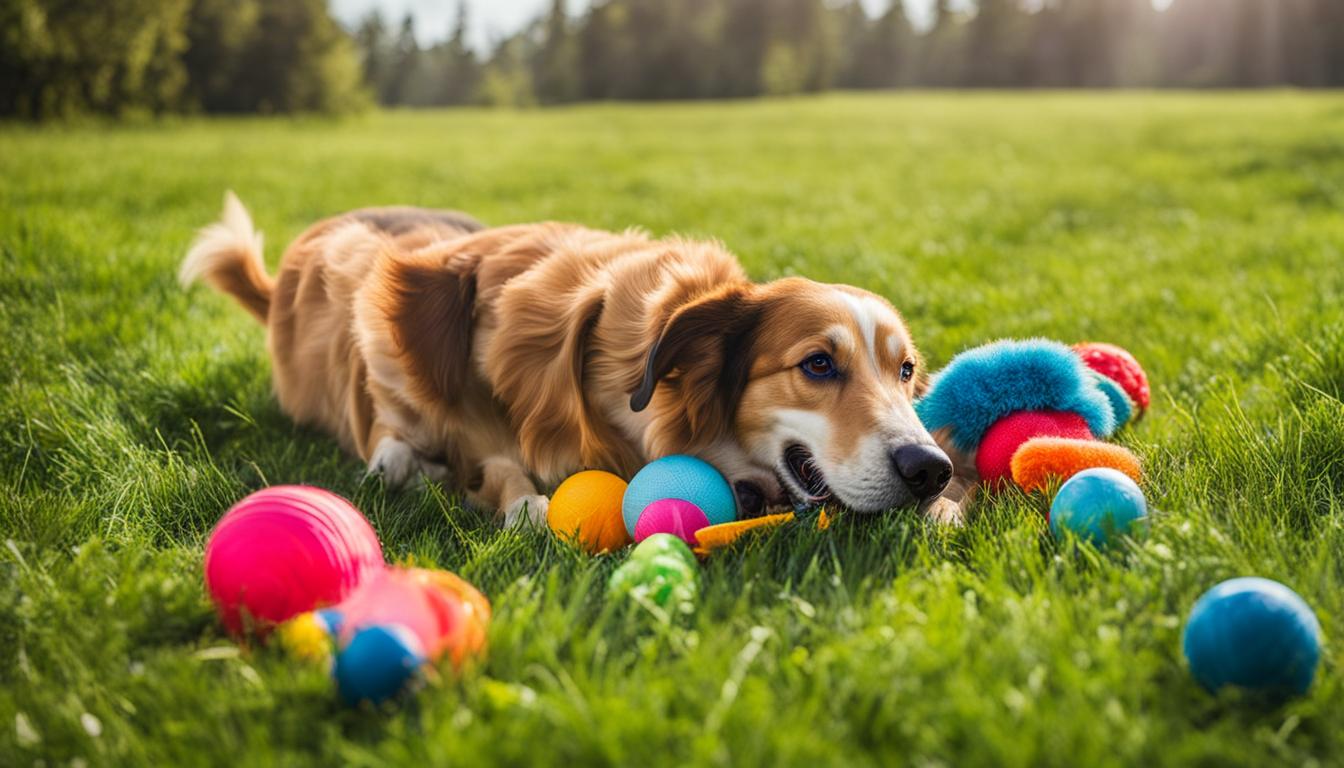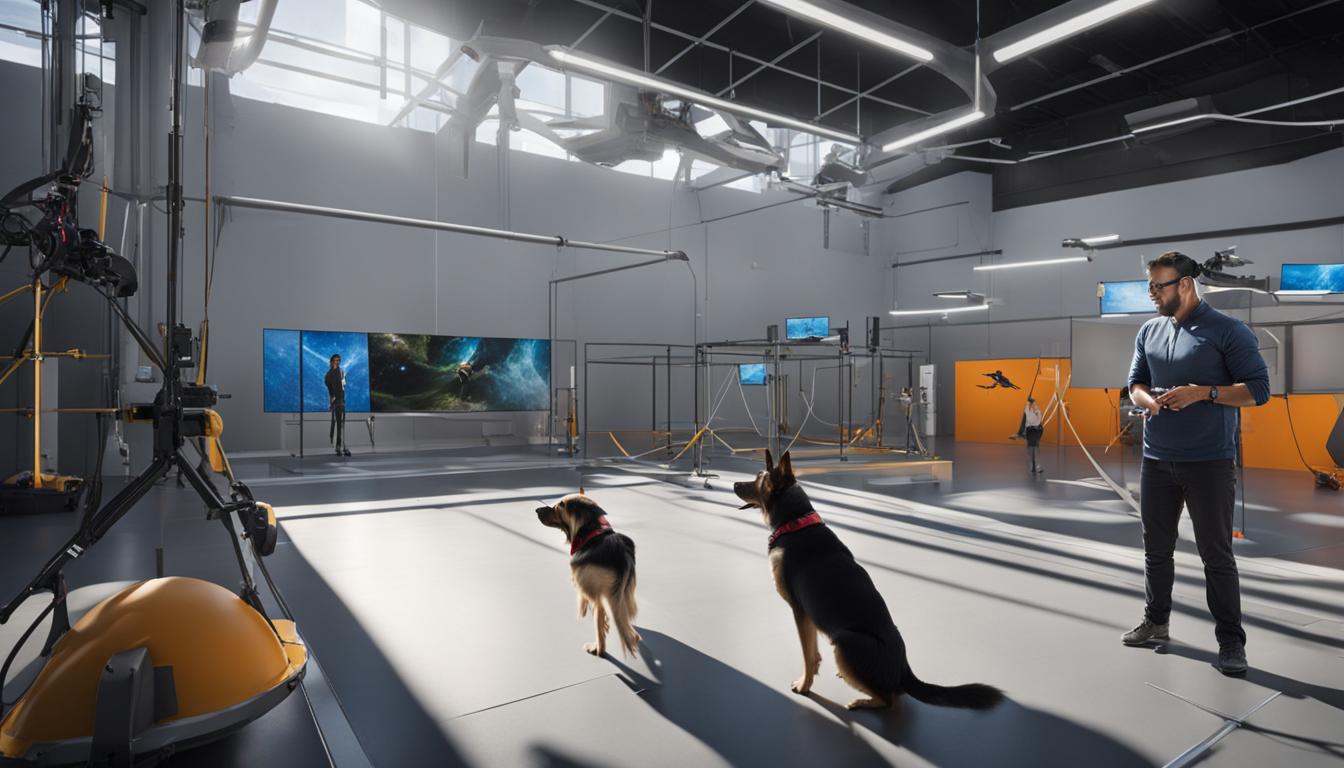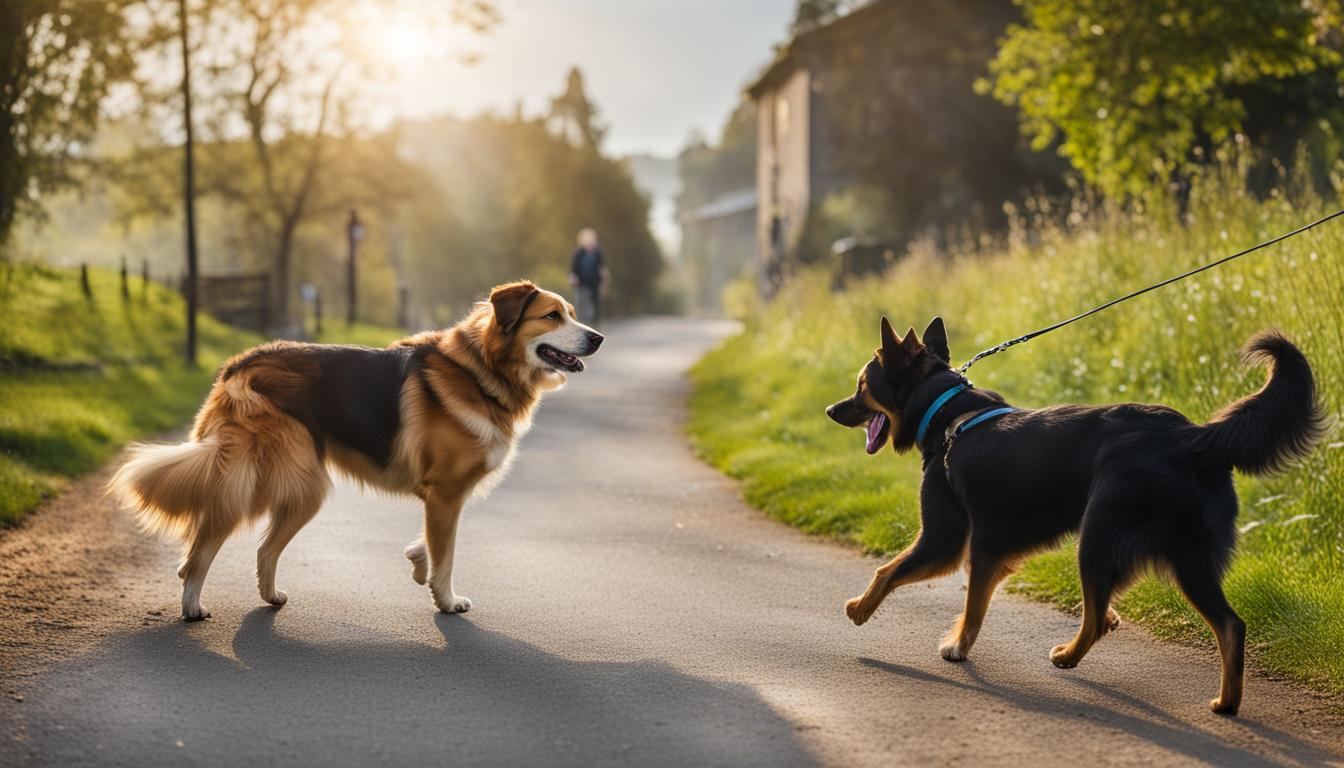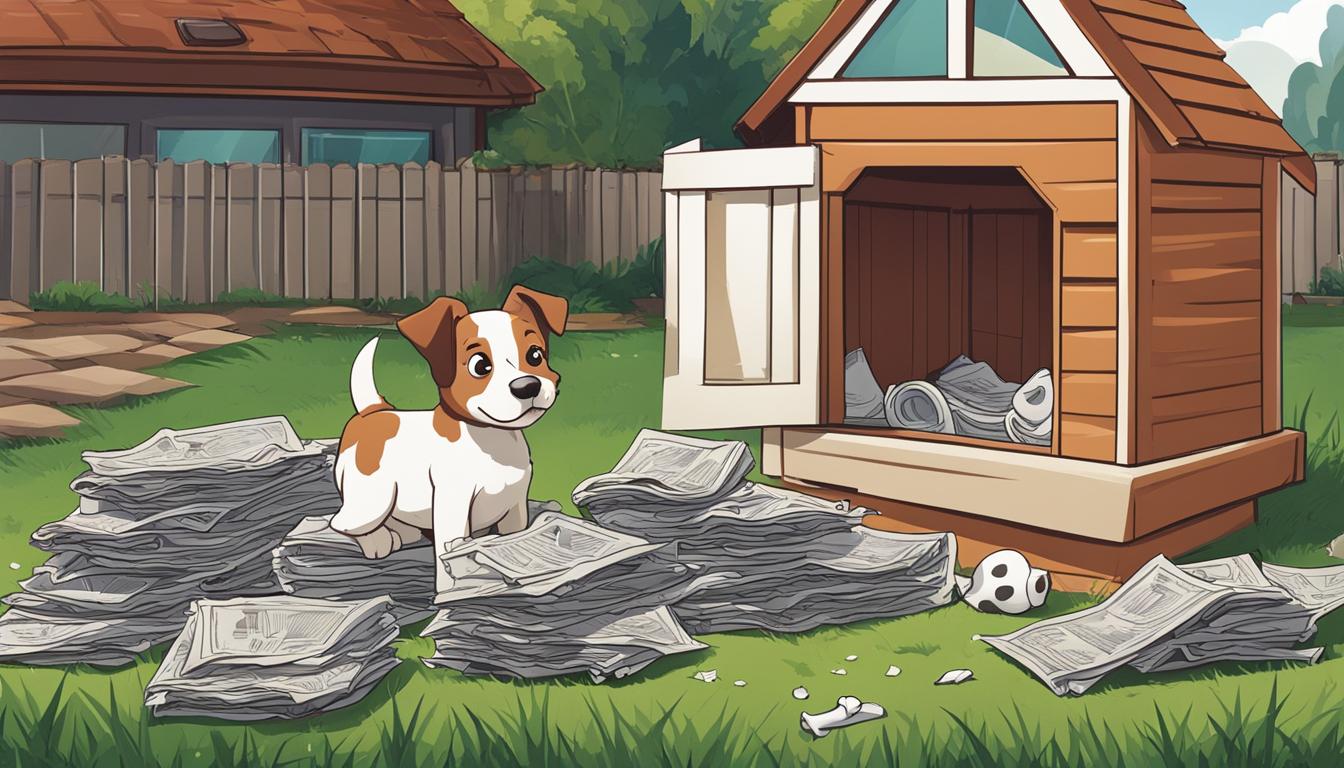Toys and interactive tools play a crucial role in effective dog training. They provide an alternative to food treats and help strengthen the bond between you and your dog. Dogs can be trained using toys and play in a fun and engaging way. Consistency with cues, maintaining the toy’s value, and rewarding in short bursts of play are key to successful training with toys. Different types of toys can be used for specific training exercises, such as tug toys for teaching the “Drop It” cue and fetch toys for reinforcing the “Sit” or “Down” commands. It is important to assess your dog’s preferential play style and choose toys accordingly.
Key Takeaways:
- Toys and interactive tools provide an alternative to food treats in dog training.
- Consistency with cues and maintaining the toy’s value are essential for successful toy-based training.
- Different types of toys can be used for specific training exercises.
- Assess your dog’s preferential play style and choose toys accordingly.
- Toy-based training can strengthen the bond between you and your dog.
The Benefits of Using Toys in Dog Training
Using toys in dog training offers various benefits. Toys provide mental stimulation and exercise, helping to develop your dog’s cognitive skills. They can also teach instructional commands such as “give it” and promote the development of motor skills. Chew toys are important for teething puppies, as they help strengthen their teeth and facial muscles. Toys that make noises can help desensitize dogs to unusual sounds and teach them cause and effect. Interactive toys with food inside can provide mental stimulation and help reduce separation anxiety. Soft toys can provide comfort and familiarity for your dog, especially during trips or bedtime.
By utilizing toys in training routines creatively, you can enhance the learning experience for your dog and make training sessions more engaging. Playful learning with training toys not only keeps your dog physically active but also engages their mind. It encourages problem-solving skills and helps prevent boredom during training sessions. Cognitive development through toys in training is essential for dogs of all ages, from puppies to adult dogs. It aids in their overall mental well-being and promotes a healthy lifestyle. Creative use of toys in training routines allows you to cater to your dog’s individual needs and preferences, making the training process enjoyable for both of you.
“Toys are not only a form of entertainment for dogs; they are also an effective tool for training and development.” – [Dog Training Expert]
When choosing toys for your dog, consider their size, breed, and play style. Some toys are designed specifically for certain breeds or stages of development. For example, durable chew toys are ideal for aggressive chewers, while plush toys are better suited for gentle dogs. Engaging your dog with the right toys during training reinforces their obedience and motivates them to learn. Toys can be used as rewards for desired behaviors, acting as a positive reinforcement tool. So, get creative and explore different types of toys to make your training sessions more effective and enjoyable for both you and your furry companion.

| Benefits of Using Toys in Dog Training | Examples |
|---|---|
| Provides mental stimulation and exercise | Interactive puzzle toys |
| Promotes cognitive development | Food-dispensing toys |
| Teaches instructional commands and motor skills | Tug toys, fetch toys |
| Relieves teething discomfort | Chew toys |
| Helps desensitize dogs to unusual sounds | Noise-making toys |
| Reduces separation anxiety | Interactive toys with food inside |
| Provides comfort during trips or bedtime | Soft plush toys |
The benefits of incorporating toys in dog training are undeniable. They enhance your dog’s mental and physical well-being, while also making training sessions more enjoyable. So, next time you engage in training activities with your dog, don’t forget to grab their favorite toy and let the play and learning begin!
Choosing the Right Toys for Your Dog
When it comes to training your dog, choosing the right toys is essential for keeping them engaged and motivated. Different dogs have different preferences and play styles, so it’s important to find toys that resonate with your furry friend. By understanding your dog’s preferences, you can select toys that will not only make training more enjoyable but also help reinforce positive behaviors.
Finding the Right Fit
- Consider your dog’s size and breed when choosing toys. For example, smaller dogs may prefer toys that are easy to grab, while larger dogs may enjoy toys they can wrestle with.
- Think about your dog’s play style. Some dogs love to chase and fetch, while others prefer tug-of-war or puzzle-solving activities. Choose toys that align with your dog’s favorite ways to play.
- Pay attention to the materials used in the toys. Opt for durable and non-toxic options that can withstand your dog’s chewing and play sessions.
Engaging Your Dog with Training Toys
Training toys can be a valuable tool in motivating your dog during training sessions. These toys are specifically designed to be rewarding and engaging, making them great for teaching new commands and reinforcing good behavior. Here are a few ways you can utilize training toys:
- Use toy rewards to reinforce positive behaviors. When your dog successfully follows a command or exhibits good behavior, reward them with a quick play session using their favorite toy.
- Integrate training toys into interactive games. For example, you can use a treat-dispensing toy to encourage your dog to stay focused and follow commands in order to earn the reward.
- Rotate your dog’s toys regularly to keep them interested and prevent boredom. Introducing new toys can also provide mental stimulation and keep training sessions exciting.
Toy Rewards in Dog Obedience Training
Incorporating toy rewards into your dog’s obedience training can be highly effective in reinforcing desired behaviors. By associating obedience with play and rewards, you can create a positive and enjoyable training experience. Here are a few tips for using toy rewards:
“Toys are an ideal reward for dogs that are especially play-driven. Training with toys not only strengthens the bond between you and your dog, but it also taps into their natural instincts and helps them unleash their energy in a productive way.”
| Toy | Description |
|---|---|
| Zippy Paws Skinny Peltz | A set of squeaky plush toys with no stuffing, perfect for interactive play. |
| KONG Wubba | A durable toy that combines squeaking, shaking, and tugging for extra excitement. |
| Various fetch sticks | A great option for dogs who love to chase and retrieve. |
| Squeaky smiley face balls | A fun and interactive toy that’s perfect for dogs who love squeaky toys. |
| Monkey RopeTugz | A rope toy with a monkey design, perfect for games of tug-of-war. |
| JW Whirlwheel Flying Disk | A durable disk-shaped toy that’s great for fetch and outdoor play. |
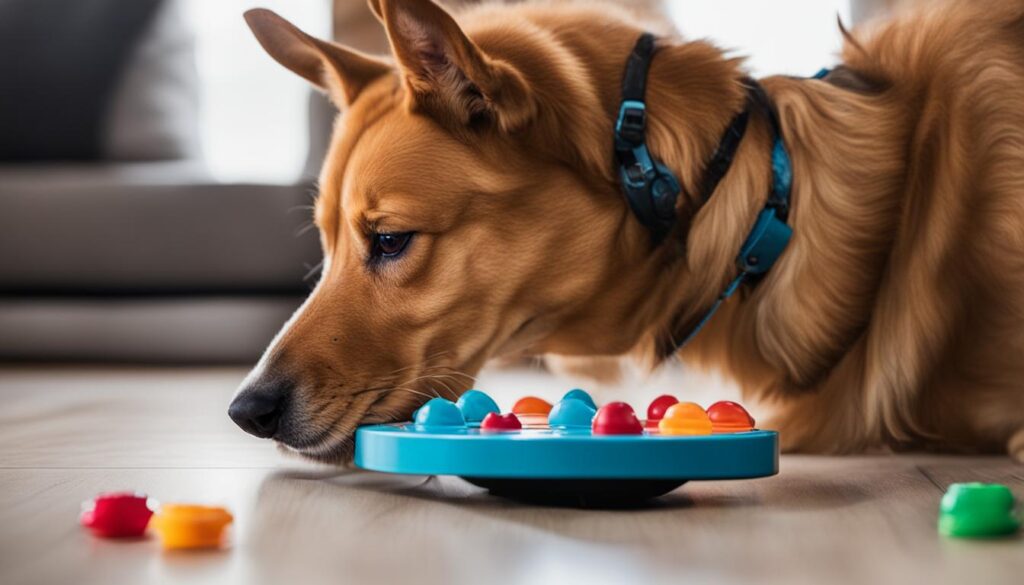
Conclusion
In conclusion, toys and interactive tools are invaluable assets in dog training. They not only provide a fun and engaging way to teach commands, but they also strengthen the bond between you and your furry friend. By understanding your dog’s play preferences and selecting the right toys, you can enhance their training experience and keep them motivated.
Whether it’s using tug toys, fetch toys, or interactive games, incorporating toys into your training routines contributes to the overall success and enjoyment of the training process. It’s important to remember to always supervise your dog during play and regularly assess the safety and effectiveness of their toys.
With the right toys and positive reinforcement, you can effectively train your dog while having a great time together. So, why wait? Go grab some toys and start training your pup today!
FAQ
How do toys help in dog training?
Toys provide an alternative to food treats and help strengthen the bond between you and your dog. They offer mental stimulation, exercise, and teach instructional commands.
What types of toys can be used for specific training exercises?
Tug toys are great for teaching the “Drop It” cue, while fetch toys can reinforce the “Sit” or “Down” commands. It’s important to assess your dog’s play style and choose toys accordingly.
What are the benefits of using toys in dog training?
Toys provide mental stimulation, develop cognitive skills, teach cause and effect, strengthen teeth and facial muscles, and desensitize dogs to unusual sounds. They can also reduce separation anxiety and provide comfort during trips or bedtime.
How should I choose toys for my dog?
Consider your dog’s preferences and play style. Conduct a “play test” to determine which toys they respond to the most. Provide a variety of textures, sizes, and shapes. Keep a few high-value toys specifically for training.
How can interactive toys and tools enhance dog training?
Interactive toys provide mental stimulation, encourage active play, reinforce obedience commands, and improve focus. They can make the learning process more enjoyable and engage your dog’s natural instincts.

